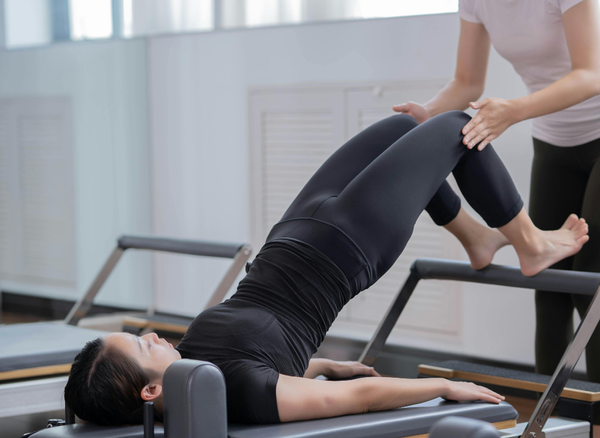Barbells are the heroes of the gym. They’re the sturdy, metal rods that hold the weight plates you lift. Without them, your dreams of becoming the next Arnold Schwarzenegger would be as flimsy as a wet noodle.
What Are Barbell Bars?
Barbell bars are an essential piece of equipment in strength training. They consist of a long metal bar with weighted plates attached to each end. The length and design of the bar allow for a wide range of exercises and movements, making it a versatile tool for building strength and muscle.
Types of Barbell Bars
Standard Barbell Bars
Standard barbell bars are the bread and butter of weightlifting. They’re typically 5 to 7 feet long and can hold a significant amount of weight. These bars are perfect for exercises like bench presses, squats, and deadlifts. If you’re setting up a home gym, a standard barbell bar should be your first order of business.
These bars are versatile and can be used for a variety of exercises. They’re also compatible with most weight plates, making them a staple in any gym. If you’re serious about lifting, investing in a high-quality standard barbell bar is a no-brainer.
Olympic Barbell Bars
Olympic barbell bars are the gold standard in weightlifting. They’re slightly longer and thicker than standard bars, and they can hold more weight. These bars are designed for Olympic lifts like the clean and jerk and the snatch. If you’re aiming to compete or just want to lift like a pro, an Olympic barbell bar is a must-have.
These bars also feature rotating sleeves, which allow the weight plates to spin freely. This reduces the strain on your wrists and makes lifting more comfortable. Olympic barbell bars are a bit pricier, but they’re worth every penny if you’re serious about your lifting game.
Specialty Barbell Bars
EZ Curl Bars
EZ curl bars are the quirky cousins of the barbell family. They have a zigzag shape that makes them perfect for bicep curls and tricep extensions. The unique design reduces the strain on your wrists, making it easier to lift heavier weights without feeling like your wrists are about to snap.
These bars are great for isolating specific muscle groups. If you’re looking to sculpt those biceps or triceps, an EZ curl bar is a fantastic addition to your gym arsenal. Plus, they’re usually more affordable than standard or Olympic bars, making them a great option for budget-conscious lifters.
Trap Bars
Trap bars, also known as hex bars, are shaped like a hexagon and allow you to stand in the middle of the bar. This design is perfect for deadlifts and shrugs, as it reduces the strain on your lower back. If you’ve ever felt like a pretzel after a heavy deadlift session, a trap bar might be your new best friend.
These bars are also great for beginners, as they make it easier to maintain proper form. If you’re new to lifting or have a history of back issues, a trap bar can help you lift safely and effectively.
Choosing the Right Barbell Bar
Selecting the right barbell bar can feel like choosing a life partner. You want something that’s reliable, fits your needs, and won’t break the bank. Start by considering your fitness goals. Are you looking to build muscle, increase strength, or compete in weightlifting? Your goals will dictate the type of barbell bar you need.
Next, consider the brand and quality. Not all barbell bars are created equal. Look for reputable brands that offer warranties and have good reviews. A high-quality barbell bar might cost more upfront, but it will last longer and provide a better lifting experience.
Maintenance Tips for Barbell Bars
Keeping your barbell bars in top shape is crucial for safety and performance. First, always clean your barbell bars after use. Sweat and chalk can cause rust and wear over time. Use a brush and some mild soap to clean the bar, and make sure to dry it thoroughly.
Second, regularly check the bar for any signs of damage. Look for cracks, bends, or loose parts. If you notice any issues, it’s best to replace the bar to avoid injury. Proper maintenance will ensure your barbell bars last for years and keep you lifting safely.
Know the Basics of a Barbell Bar
To properly maintain your barbell bars, it’s essential to understand the anatomy.
Here are the basic parts of a bar and what they do:
- Knurling: The textured pattern on the bar that improves grip.
- Sleeves: The rotating ends of the bar where weight plates are loaded.
- Bushings or Bearings: These reduce friction between the sleeves and the bar, allowing for smoother lifting.
- Shaft: The long, central part of the bar that you grip during exercises.
- Collars: These secure the weight plates on the sleeves and prevent them from sliding off.
Understanding these parts will help you choose the right bar for your needs and maintain it properly.
Barbell Bar FAQs
Learn more and browse through the frequently asked questions about barbell bars.
What is the difference between a standard and an Olympic barbell bar?
Standard barbell bars are typically shorter and thinner, making them suitable for general powerlifting exercises. Olympic barbell bars are longer, thicker, and designed for Olympic lifts. They also feature rotating sleeves for better wrist comfort.
How do I maintain my barbell bars?
Clean your barbell bars after each use with a brush and mild soap. Dry them thoroughly to prevent rust. Regularly inspect the bars for any signs of damage and replace them if necessary.
Can I use the same barbell bar for all exercises?
While you can use a standard barbell bar for most exercises, specialty bars like the EZ curl and trap bars are designed for specific lifts and can enhance your workout experience. It’s best to have a variety of bars to suit different exercises and goals.
How heavy is the barbell bar?
The weight of a barbell bar can vary, but standard bars typically weigh around 45 lbs (20 kg), while Olympic bars can weigh between 45-55 lbs (20-25 kg). Specialty bars may have different weights depending on their design and purpose.
How long is a barbell bar?
The length of a barbell bar can vary, but standard bars are typically 5 to 7 feet long. Olympic bars are slightly longer at around 7 feet. Specialty bars may have different lengths depending on their design and purpose.
Summary
Barbell bars are essential tools for anyone serious about lifting. From standard and Olympic bars to specialty bars like the EZ curl and trap bars, there’s a bar for every type of lift and fitness goal. Choosing the right barbell bar involves understanding your needs and investing in quality. With proper maintenance, your barbell bars will serve you well for years to come.








